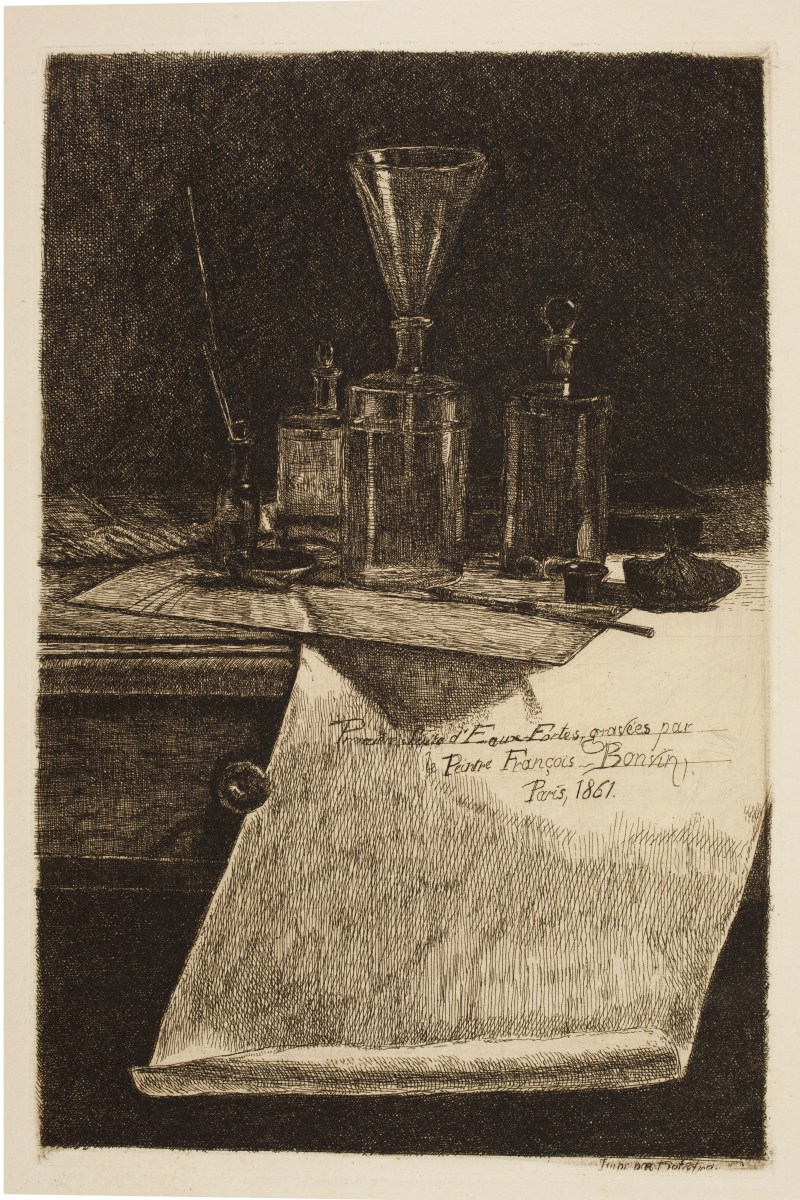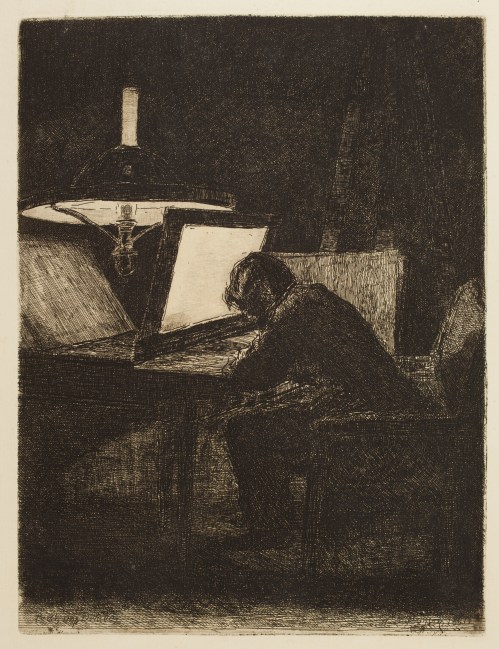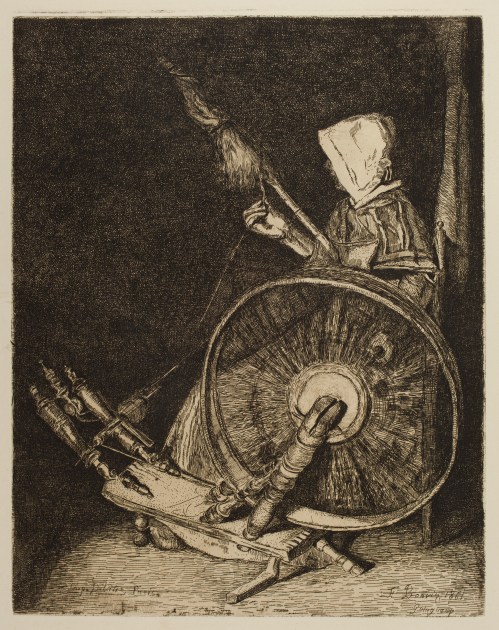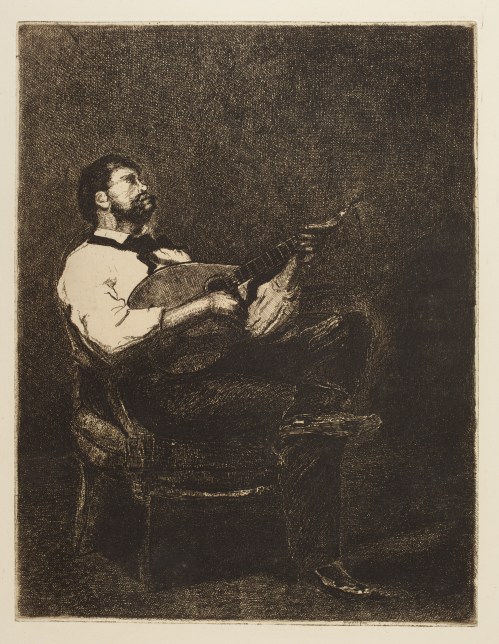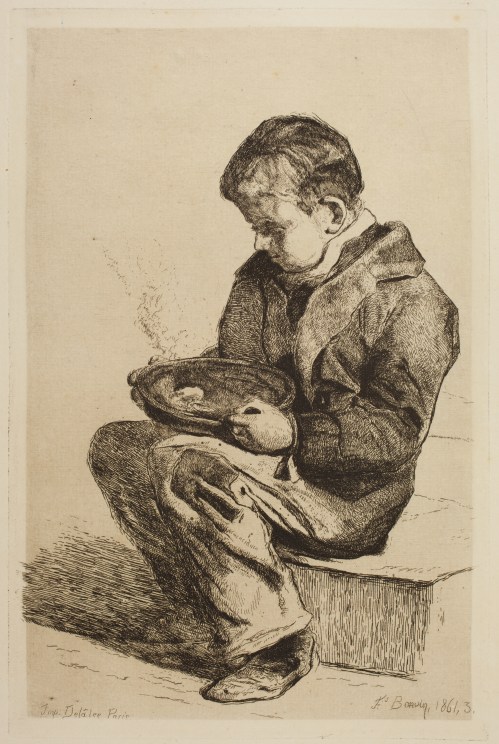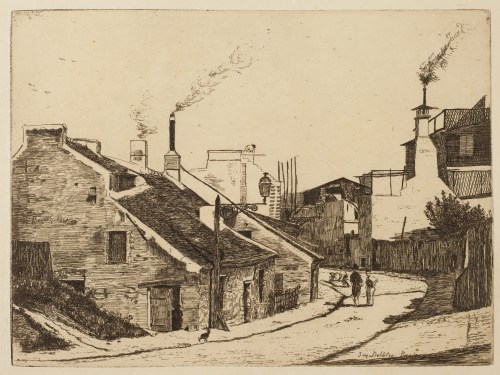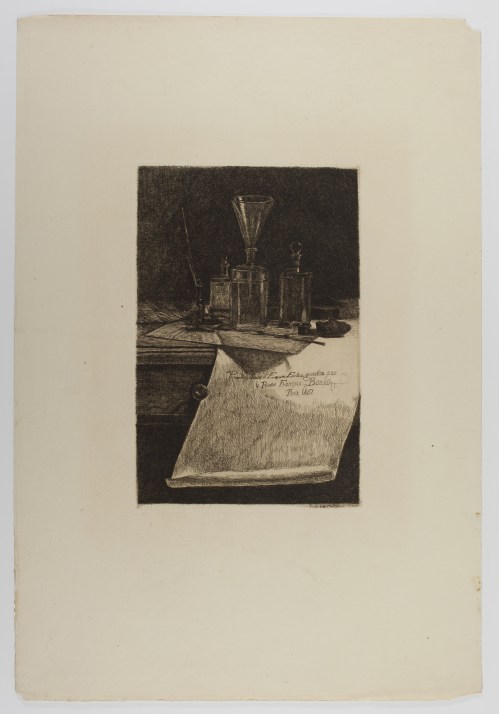François BONVIN (1817 - 1887): Six EAUX-FORTES, dessinées et gravées par François BONVIN, peintre - 1861
SOLD
[Six etchings, drawn and etched by François Bonvin, painter]
Etching and drypoint. Beraldi 2, IFF 6 to 11, 1st state (of 2 or 3 depending on the plates).
Extremely rare complete set of six plates and a frontispiece, printed by Auguste Delâtre and published by the author. The plates are in their original folder with etched title.
Extremely rare impressions of the very first edition (1861). In this edition, the plates are in their first state (out of 2 or 3), before modification of the letter and before further rework. The impressions are of excellent quality, with deep blacks. The plates were republished several times: first in 1871 for the Première Suite de DIX EAUX-FORTES par François BONVIN, peintre published this time by Cadart, then in 1887 and 1888 in the magazine l'Art.
- Six EAUX-FORTES, dessinées et gravées par François BONVIN, peintre, A Paris, Chez l'Auteur, rue Saint-Jacques, N°236. 1861. Imprimé par Aug. Delâtre, même rue n°265. F. Bonvin sc. Etching, 265 x 190 mm. Printed on blue wove paper, folded as a folder (dimensions of unfolded folder: 460 x 660 mm).
- Frontispice, Instruments de l’Eau-forte [Frontispiece, Etching instruments]. Etching, 225 x 148 mm. Impression of the 1st state (of 3), with etched title Première Suite d'Eaux-Fortes, gravées par le Peintre François Bonvin, Paris, 1861 and inscription at bottom Imp. Par Delâtre. In the 2nd state, the title is removed and the signature F. Bonvin 1871 London is added. In the 3rd state, the letter has been completely erased. Superb impression printed with tone on HUDELIST watermarked laid paper. Full margins (sheet size: 445 x 305 mm).
- Fileuse bretonne [Breton spinner]. Etching, 276 x 217 mm. Impression of the 1st state (of 3) with the word Guingamp under the printmaker’s signature and before further work. In subsequent states, new hatchings are added, notably to cover Auguste Delâtre's address, then the height is reduced by 8 mm and a letter is added. Superb impression printed on laid paper. Full margins.
- Enfant mangeant sa soupe [Child eating soup]. Etching, 224 x 147 mm. Impression of the 1st state (of 2), before the printer’s signature was removed. Superb impression printed with tone on laid paper. Full margins.
- Le Graveur [The Printmaker]. Etching and drypoint, 215 x 163 mm. Impression of the 1st state (of 2), before the new hatchings overprinting Delâtre's address. Superb impression printed on laid paper. Full margins.
- La Rue du Champ de l'Alouette (Misérables). Etching, 138 x 185 mm. Impression of the 1st state (of 2) before Delâtre's signature is erased, and before the number 5. Superb impression printed with tone on laid paper. Full margins.
- Joueur de Guitare [Guitar player]. Etching, 279 x 214 mm. Impression of the 1st state (of 2), inscribed Paris, Imp. Superb impression printed with tone on laid paper. Full margins.
All the impressions are of remarkable quality. Blacks are very deep and the drypoint, when used, is very sharp, whereas it disappears from later impressions. This is particularly true of the plate Le Graveur, where the drypoint marks on the printmaker’s screen and on the lamp quickly disappear.
Overall in very good condition. A few small creases on the edge of the folder and two small tears at the fold. Minor flaws to edges of the sheets.
Known for his paintings depicting the daily lives of modest folk, landscapes and still lifes, François Bonvin did very few prints. Jean Laran and Jean Adhémar count only 24 prints (IFF après 1800, pp. 135-136).
Galerie Berès devoted an exhibition to this artist in 1998. In the exhibition catalog, the authors clarify the dating of the series of Six Eaux-fortes: "A letter to Champfleury dated October 22, 1861, inviting him to dinner, mentions Bonvin supervising the printing of his etchings in Delâtre's studio, which precisely dates the publication of the collection to the end of the year." (François Bonvin, p. 104, our translation)
In 1861, etching was already enjoying a revival in France, but the Société des Aquafortistes had not yet been founded. It was in 1862 that Alfred Cadart, a Parisian printer and publisher, founded the famous society, which would bring together numerous artists with a common taste for etching and the same goal: to revive public interest in this technique, which had been dethroned by lithography and woodcut since the turn of the century.
The collection met with some success. "Baudelaire, who appreciated and knew Bonvin well, spoke favorably of the collection in the Revue anecdotique of April 1862, then in Le Boulevard of September 14, 1862: "M. Bonvin, not long ago, put on sale at M. Cadart (the publisher of works by Bracquemond, Flameng, Chifflart), a book of etchings, laborious, firm and meticulous like his painting." The plates of Le Graveur and Instruments de l'Eau-forte are still often reproduced in specialized books.



